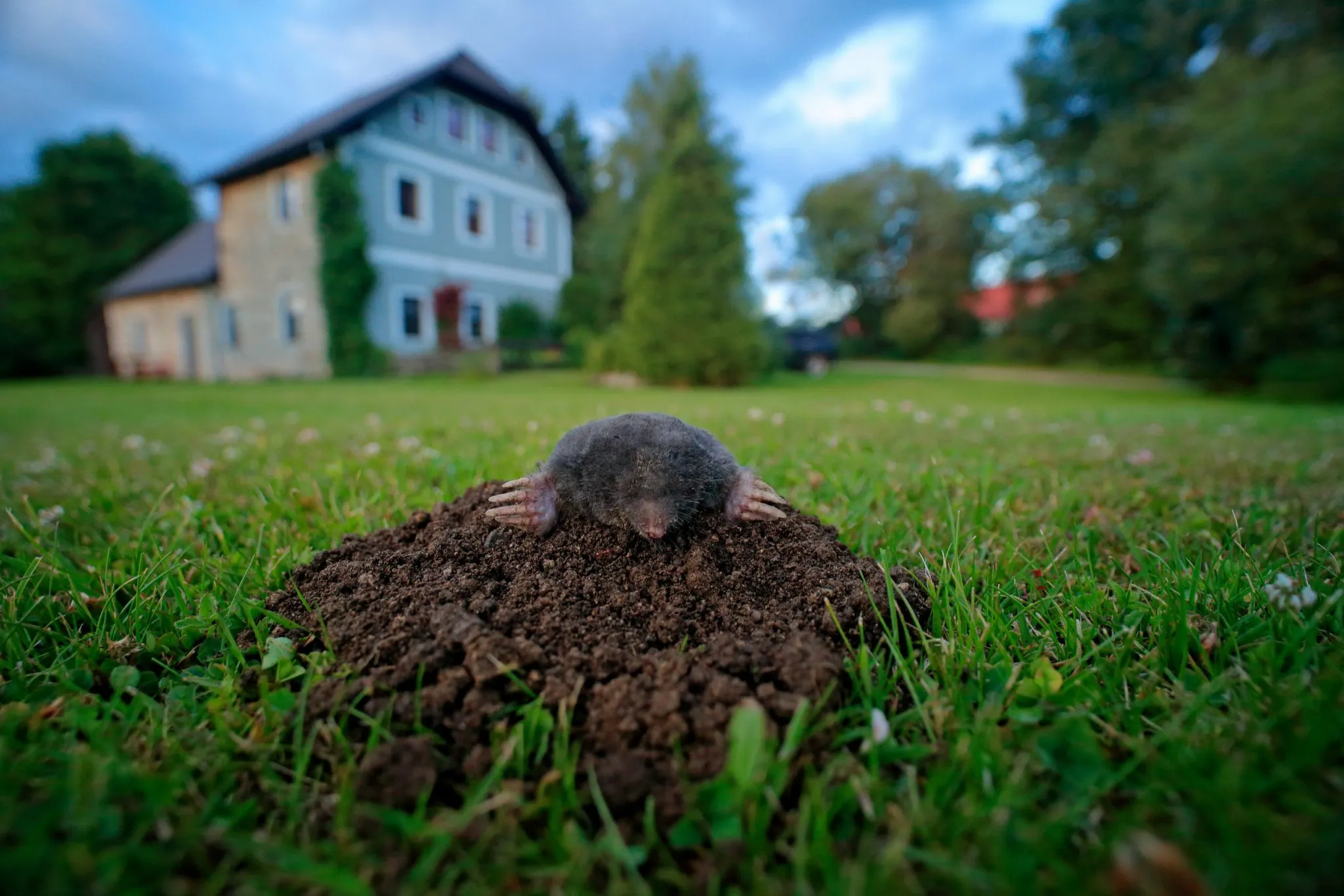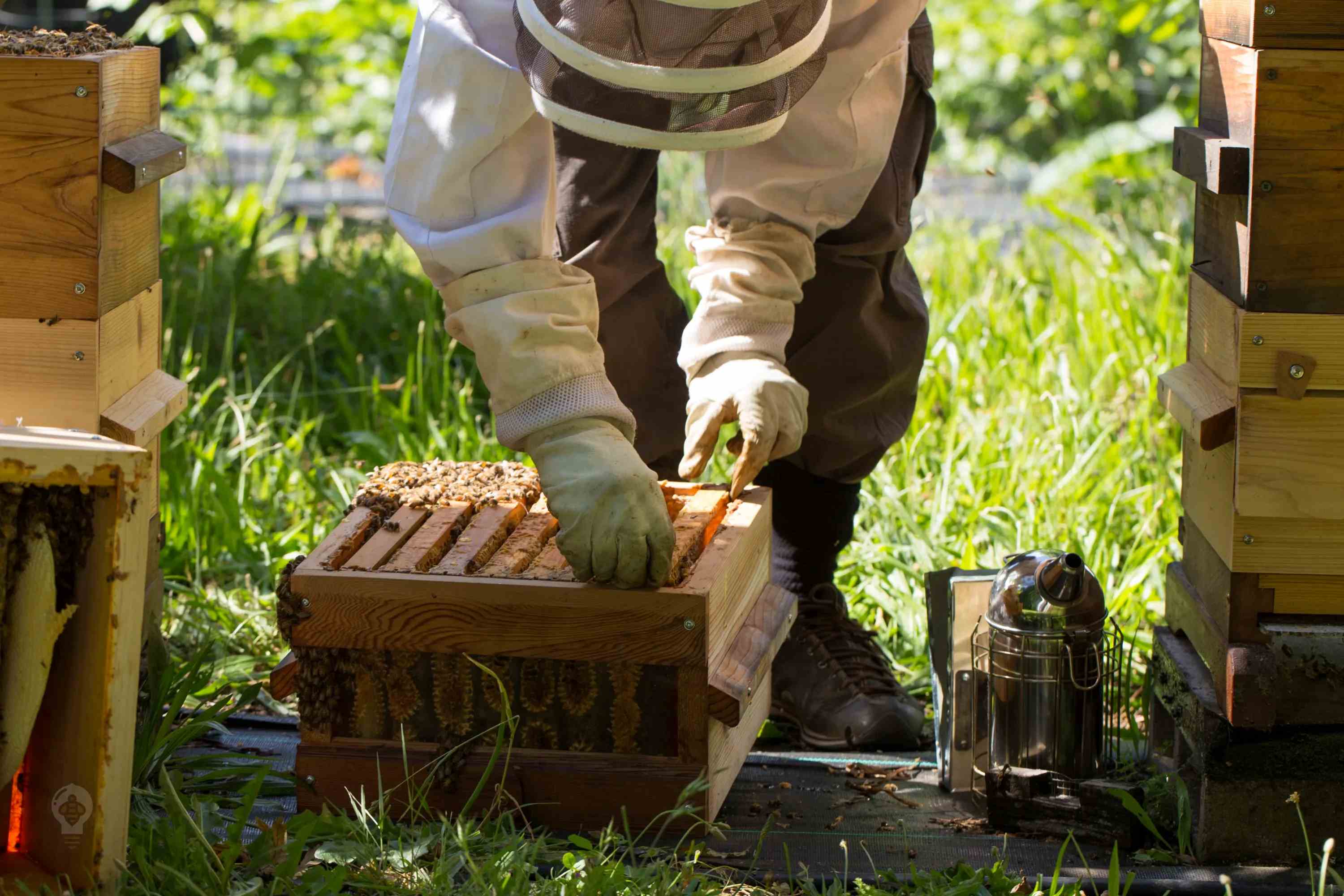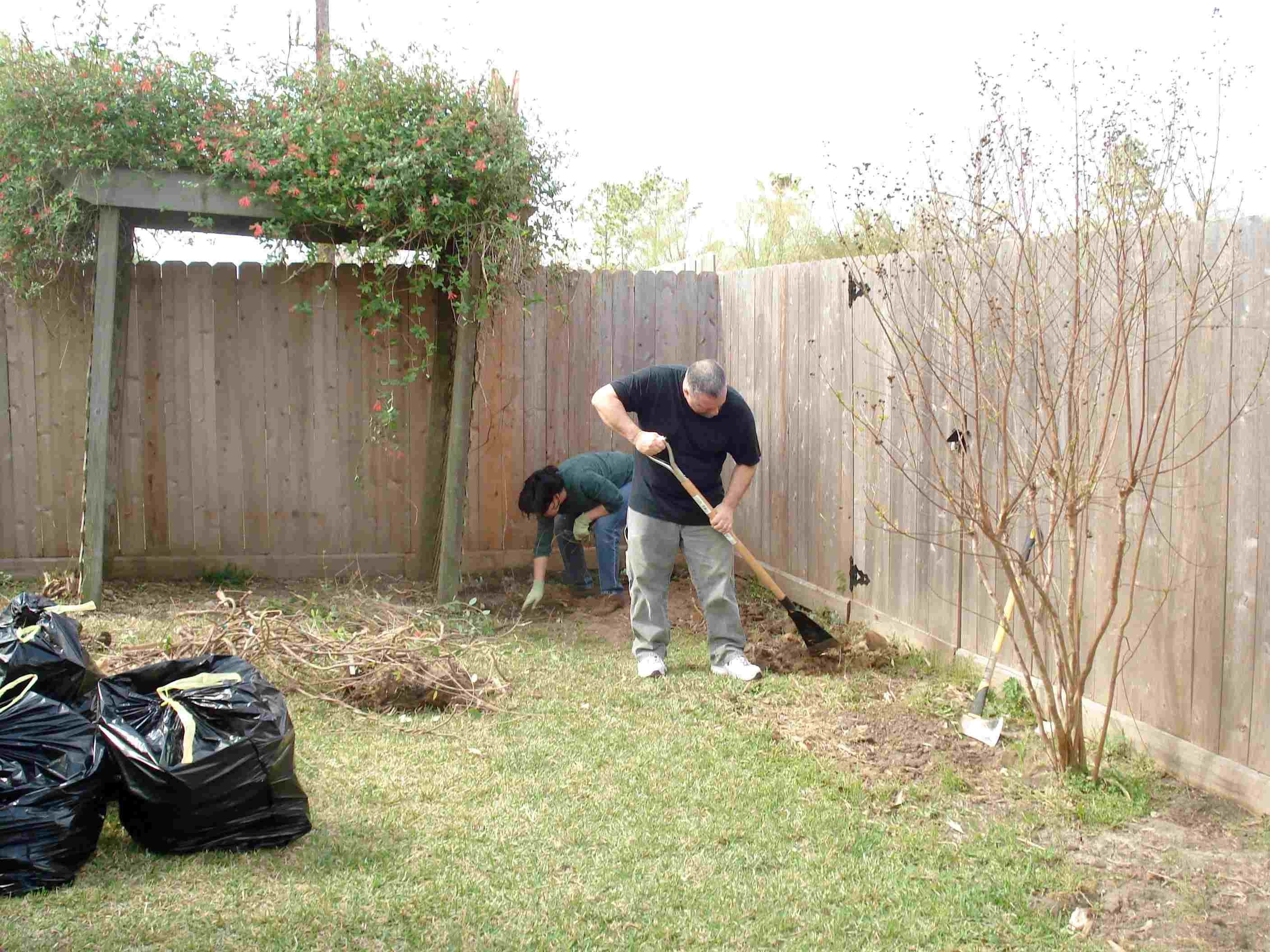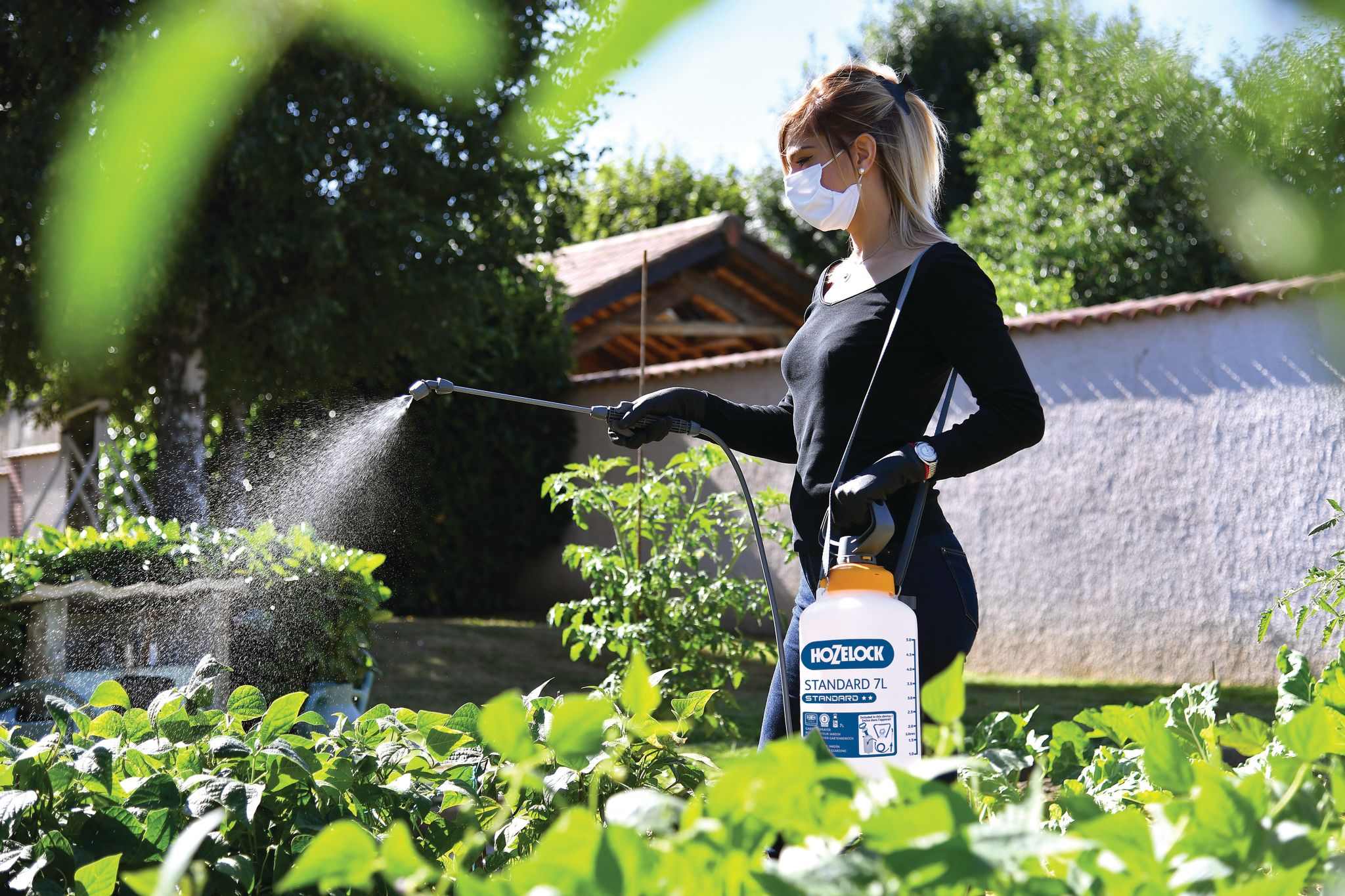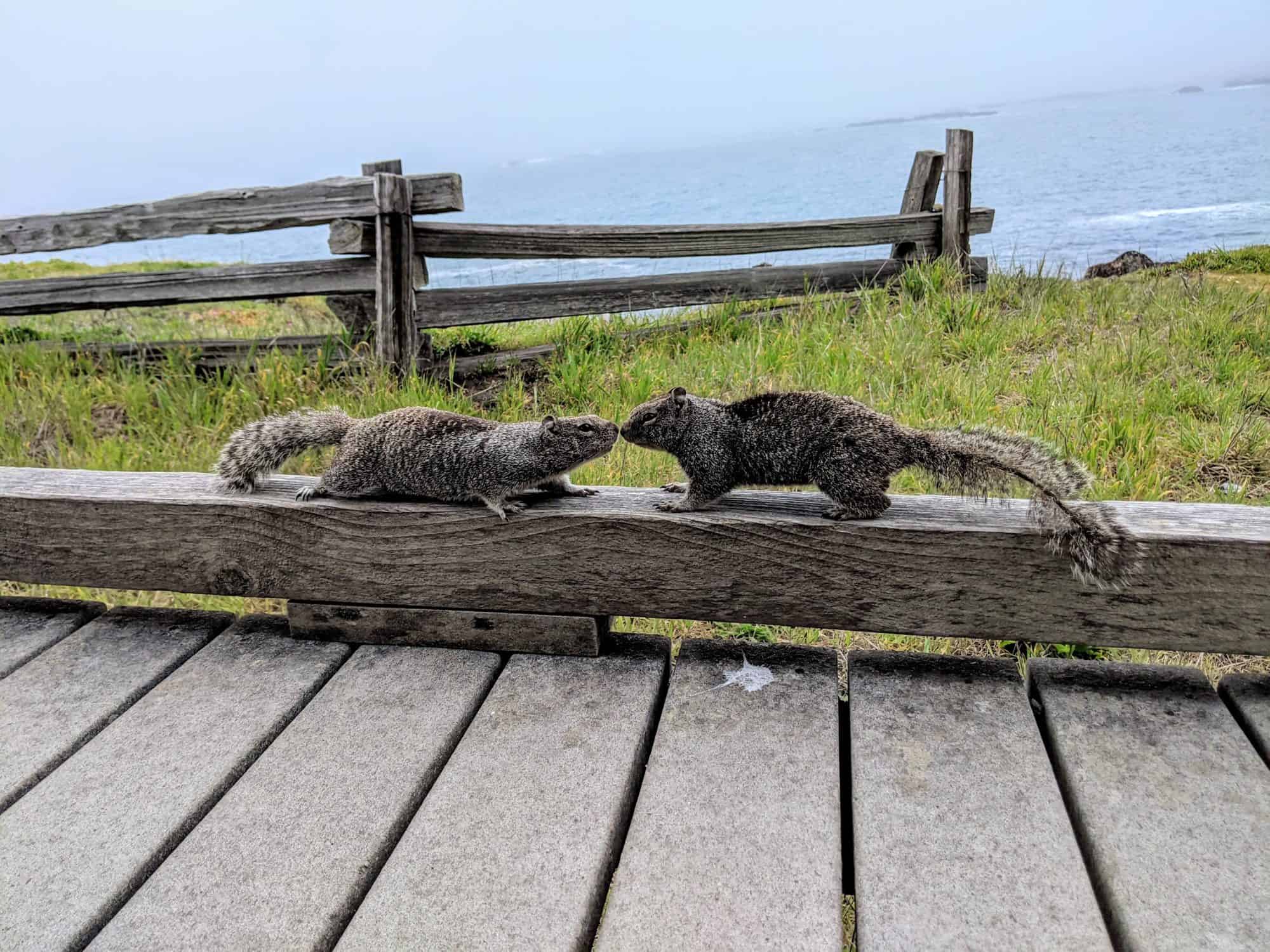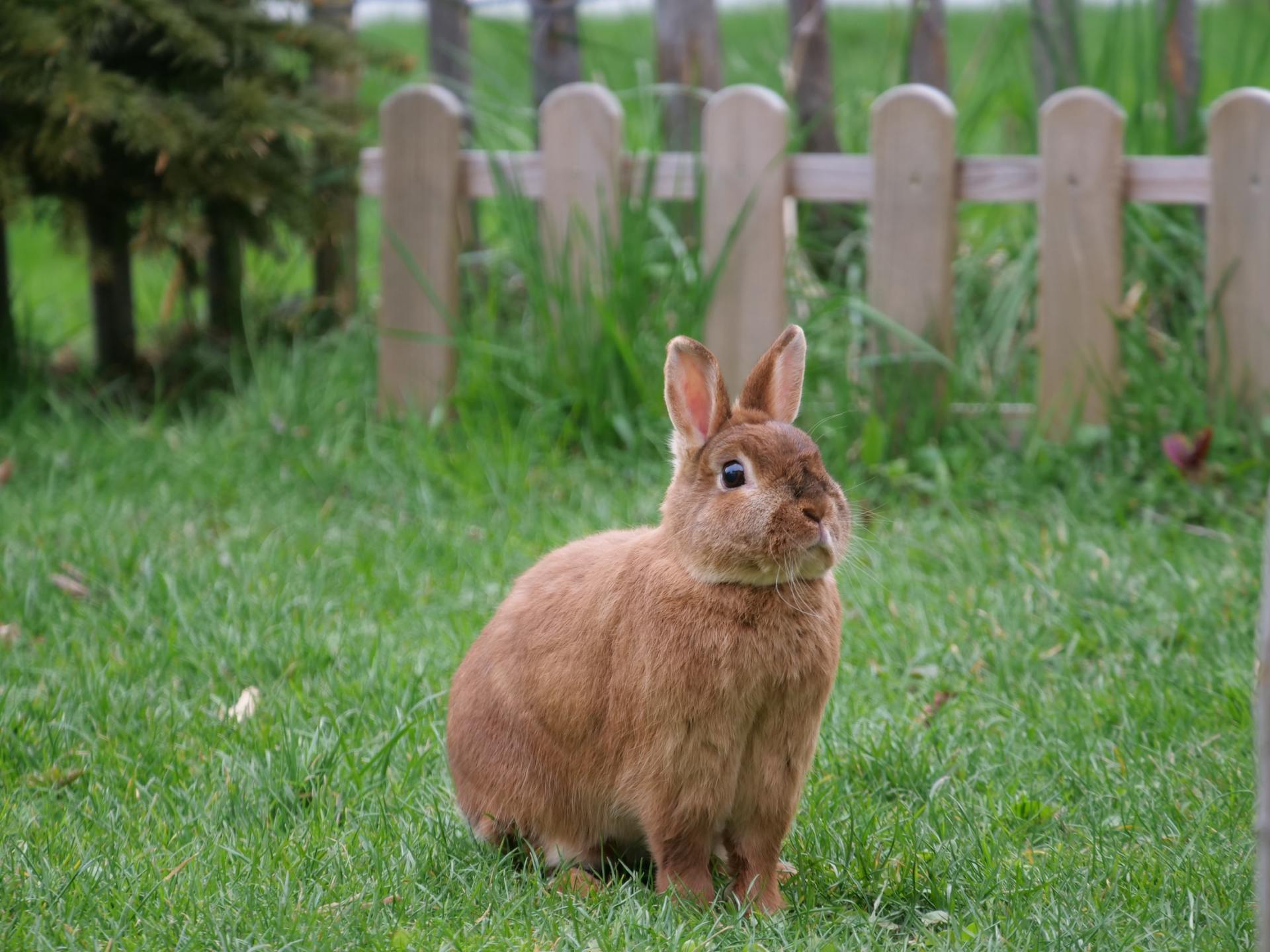Home>Gardening Tips and Tricks>How To Get Rid Of Gnats In Backyard


Gardening Tips and Tricks
How To Get Rid Of Gnats In Backyard
Modified: January 22, 2024
Learn effective problem-solving techniques to eliminate gnats in your backyard and enjoy a pest-free outdoor space. Take control of your gnat problem with our expert tips and strategies.
(Many of the links in this article redirect to a specific reviewed product. Your purchase of these products through affiliate links helps to generate commission for Chicagolandgardening.com, at no extra cost. Learn more)
Table of Contents
- Introduction:
- Understanding Gnats:
- Identifying the Presence of Gnats in Your Backyard:
- Causes and Factors That Attract Gnats to Your Backyard:
- Prevention Techniques for Avoiding Gnats in Your Backyard:
- Natural Remedies to Get Rid of Gnats in Your Backyard:
- Chemical Solutions for Eliminating Gnats in Your Backyard:
- Using Traps to Control Gnats in Your Backyard:
- Maintaining a Gnat-Free Backyard: Tips and Tricks
- Conclusion
Introduction:
Welcome to your backyard oasis, a place where you can relax, unwind, and enjoy the beauty of nature. But what happens when those pesky gnats start buzzing around, ruining your peaceful atmosphere? Dealing with gnats in your backyard can be frustrating and annoying, but fortunately, there are effective solutions to get rid of them. In this article, we will explore various techniques and remedies to help you eliminate gnats and reclaim your outdoor space.
Before we dive into the methods of gnat control, let’s first understand what gnats are. Gnats are small flying insects that belong to the family of flies. They are commonly found in outdoor areas, particularly in moist environments such as gardens and backyard spaces. These tiny creatures are attracted to decaying organic matter, damp soil, and standing water, making your backyard an ideal breeding ground for them.
Identifying the presence of gnats in your backyard is crucial to implementing effective control measures. Gnats are typically found in swarms, so if you notice a cloud of small flies hovering around plants, garbage cans, or compost piles, chances are you have a gnat infestation. Additionally, if you experience frequent bites or notice small holes in your plants’ leaves, it may also indicate the presence of gnats.
Now that we understand what gnats are and how to identify their presence, let’s explore the causes and factors that attract gnats to your backyard. Understanding these factors will help you take proactive steps to prevent gnats from infesting your outdoor living space.
Remember, your backyard should be a sanctuary of tranquility, not a breeding ground for annoying pests. So keep reading to discover the prevention techniques, natural remedies, chemical solutions, and trap options to eradicate these unwelcome guests from your backyard.
Understanding Gnats:
Gnats are a common nuisance in many outdoor spaces, including backyards. Understanding their behavior and characteristics is essential in effectively dealing with them. Gnats belong to the family of flies and are small flying insects that can be found in various environments, such as gardens, lawns, and even indoor spaces.
One important thing to note is that not all gnats are the same. Different species of gnats exist, including fungus gnats, fruit flies, and biting gnats. Each species may have specific habits and preferences that influence their behavior and the best methods for controlling them.
Fungus gnats are attracted to moist environments and are often found near potted plants, where they lay their eggs in damp soil. Fruit flies, on the other hand, are commonly found near overripe fruits and vegetables or in areas where fermented liquids are present. Biting gnats, also known as black flies or no-see-ums, are notorious for their irritating bites and tend to swarm around areas near bodies of water.
Gnats are primarily active during the warmer months, as they thrive in humid and moist conditions. This is why they are often seen in abundance during spring and summer. They are attracted to decaying organic matter, such as decomposing leaves, rotting fruits, and plant debris. Gnats feed on the organic material as well as on nectar and plant sap.
Understanding the life cycle of gnats is important for effective control. Gnats typically undergo a four-stage life cycle: egg, larvae, pupae, and adult. The adult female gnat lays eggs on or near suitable food sources, such as moist soil or decaying organic matter. The eggs hatch into larvae, which feed on the organic material and develop into pupae. Finally, the adult gnats emerge from the pupae and start the cycle again.
It’s worth noting that gnats can reproduce rapidly, with each female laying hundreds of eggs in her lifetime. This rapid reproduction can contribute to sudden gnat infestations in your backyard if not addressed promptly.
Now that we have an understanding of the different types of gnats and their behavior, it’s time to learn how to identify the presence of gnats in your backyard and the factors that attract them.
Identifying the Presence of Gnats in Your Backyard:
Gnats can be a nuisance in your backyard, but before you can effectively get rid of them, you need to identify their presence. Here are some signs that can help you determine if gnats have infested your outdoor space.
First and foremost, if you see a swarm of small flies hovering in your backyard, especially around areas with decaying organic matter or standing water, it’s a clear indication of a gnat infestation. These swarms are typically formed by gnats gathering in search of food or mating opportunities.
In addition to the visible presence of gnats, you may also notice small bites on your skin or small holes in your plants’ leaves. Biting gnats, also known as black flies or no-see-ums, are particularly bothersome as they can leave itchy bites, which can be quite irritating. It’s important to address these issues promptly to prevent further discomfort and damage to your plants.
Furthermore, gnats are often attracted to damp and moist areas. Keep an eye out for areas in your backyard that have excess moisture, such as wet soil, damp mulch, or stagnant water. These areas can serve as breeding grounds for gnats, making them even more likely to infest your outdoor space.
If you’re growing potted plants in your backyard, check the soil for the presence of gnats. Fungus gnats, in particular, are attracted to moist soil and may lay their eggs there. Inspect the surface of the soil and look for tiny flying insects, as well as any larvae or pupae that may be present.
Another way to identify the presence of gnats is by monitoring the behavior of your plants. If you notice wilting, yellowing, or stunted growth in your plants, it may be a sign of gnat infestation. Gnats can feed on the roots of your plants, causing damage and hindering their overall health.
By being vigilant and observant, you can quickly identify the presence of gnats in your backyard. Once you’ve confirmed their presence, it’s essential to address the factors that attract them to prevent further infestation.
Causes and Factors That Attract Gnats to Your Backyard:
Gnats are attracted to certain conditions and factors that can be found in your backyard. Understanding these causes will help you take proactive measures to prevent gnats from infesting your outdoor space. Here are some common causes and factors that attract gnats:
1. Moisture: Gnats thrive in humid and moist environments. Standing water, damp soil, and even overwatering your plants can create the perfect breeding ground for gnats. Ensure proper drainage in your backyard and avoid leaving containers or areas with stagnant water.
2. Decaying Organic Matter: Gnats are attracted to decaying organic matter, such as rotting fruits, decomposing leaves, and plant debris. These materials provide a food source for gnats and encourage their presence in your backyard. Regularly clean up fallen leaves and fruits, and dispose of them properly to prevent attracting gnats.
3. Overripe Fruits and Vegetables: Leftover or overripe fruits and vegetables in your backyard can be a magnet for fruit flies, a type of gnat. Fruit flies are attracted to the fermenting sugars in fruits and vegetables, and their presence can quickly escalate into a gnat infestation. Dispose of overripe fruits and vegetables promptly and clean up any spills to deter fruit flies.
4. Damp Mulch: Using mulch in your garden can help retain moisture and provide a protective layer for your plants. However, if the mulch becomes too damp, it can attract fungus gnats. Ensure proper airflow and drainage in your mulch beds to discourage the presence of gnats.
5. Unmaintained Compost: Composting is a great way to recycle kitchen scraps and create nutrient-rich soil for your garden. However, if your compost pile is not properly maintained, it can become a breeding ground for gnats. Turn and aerate your compost regularly, and avoid adding excessively wet materials that can attract gnats.
6. Lack of Air Circulation: Gnats prefer stagnant environments with poor air circulation. If your backyard has dense foliage or lacks proper airflow, it can provide an ideal habitat for gnats. Consider pruning your plants to promote airflow and create a less appealing environment for gnats.
By addressing these causes and factors, you can make your backyard less attractive to gnats and reduce the chances of infestation. In the next sections, we will explore various prevention techniques, natural remedies, chemical solutions, and trapping methods to help you combat gnats effectively.
Prevention Techniques for Avoiding Gnats in Your Backyard:
Preventing gnats from infesting your backyard is the key to maintaining a gnat-free outdoor space. By implementing these prevention techniques, you can significantly reduce the chances of gnats taking over your backyard:
1. Remove Standing Water: Gnats are attracted to standing water, so regularly inspect your backyard for areas where water tends to collect, such as birdbaths, empty containers, or clogged gutters. Ensure proper drainage and eliminate any standing water to eliminate potential breeding sites for gnats.
2. Clean Up Decaying Organic Matter: Regularly clean up fallen leaves, decomposing plant matter, and overripe fruits or vegetables. Dispose of them properly in compost bins, ensuring the compost is well-maintained and turned frequently.
3. Maintain Proper Ventilation: Good air circulation in your backyard helps discourage gnats from lingering. Trim back overgrown plants and remove any dense foliage that can trap moisture and create a stagnant environment.
4. Use Protective Netting: If you have a specific area in your backyard, such as a patio or outdoor dining area, where gnats tend to be more prevalent, consider using fine mesh netting to create a barrier. This will prevent gnats from gaining access to the area and disrupting your enjoyment.
5. Implement Natural Repellents: Certain plants and herbs have natural repellent properties that can deter gnats. Planting herbs like basil, mint, lavender, and rosemary in your backyard can help repel gnats. You can also use citronella candles or essential oils as a natural repellent.
6. Maintain Cleanliness: Keep your backyard clean and free of debris. Regularly sweep and remove fallen leaves, prune dead branches, and maintain a neat and tidy outdoor space. This reduces the availability of organic matter that attracts gnats.
7. Avoid Overwatering: Gnats thrive in moist environments, so avoid overwatering your plants. Water them only as needed and ensure proper drainage. Additionally, ensure that your sprinkler system is not creating excessive moisture in your backyard.
By incorporating these prevention techniques into your backyard maintenance routine, you can create an environment that is less attractive to gnats. However, if you already have an existing gnat problem, don’t worry. In the upcoming sections, we will explore natural remedies, chemical solutions, and trap options to help you get rid of gnats effectively.
Natural Remedies to Get Rid of Gnats in Your Backyard:
If you prefer a more natural approach to gnat control in your backyard, there are several effective remedies you can try. These natural remedies are safe for the environment, your plants, and you. Here are some methods to get rid of gnats naturally:
1. Apple Cider Vinegar Trap: Gnats are attracted to the scent of apple cider vinegar. To create a gnat trap, fill a small container with apple cider vinegar and add a few drops of dish soap to break the surface tension. Place it in areas where gnats are concentrated, and they will be lured into the container and trapped.
2. Sticky Traps: Sticky traps are an excellent option to catch adult gnats. These traps are coated with a sticky substance that captures the gnats when they come into contact with it. Hang the traps near problem areas or close to plants affected by gnats.
3. DIY Gnat Spray: Create your own natural gnat spray by mixing a few drops of dish soap with water in a spray bottle. Shake well, and spray the mixture directly on the gnats. The soap breaks down their outer protective layer and kills them.
4. Neem Oil: Neem oil is a natural insecticide that can help control gnats. Dilute neem oil with water, following the instructions on the bottle, and apply it to the affected plants and surrounding areas. The oil works by disrupting the gnats’ feeding and reproductive cycle.
5. Mosquito Dunks: Mosquito dunks contain a bacteria called Bacillus thuringiensis israelensis (Bti), which is toxic to gnat larvae. Use mosquito dunks in areas with standing water, such as birdbaths or ponds. The dunks release the bacteria and kill the larvae without harming other beneficial insects or animals.
6. Yellow Sticky Cards: Yellow sticky cards are effective at attracting and trapping flying insects, including gnats. Hang the cards near gnat-infested areas, and the gnats will be drawn to the yellow color and stick to the adhesive surface.
7. Essential Oils: Certain essential oils, such as eucalyptus, peppermint, and lemongrass, have strong scents that repel gnats. Dilute a few drops of the oil with water and spray it on affected areas or create a diffuser using essential oil-infused cotton balls.
Remember, natural remedies may require regular application and persistence to achieve desired results. Using a combination of these methods along with prevention techniques can greatly reduce the gnat population in your backyard. However, if the infestation persists or becomes overwhelming, you may need to consider chemical solutions or professional pest control options.
Chemical Solutions for Eliminating Gnats in Your Backyard:
If natural remedies have not provided the desired results in getting rid of gnats in your backyard, you may consider using chemical solutions. These products are specifically formulated to target and eliminate gnats effectively. Here are some chemical solutions to consider:
1. Insecticides: There are insecticides available that specifically target gnats and other flying insects. Look for products that contain ingredients like pyrethrin or cyfluthrin. Follow the instructions on the label carefully and apply the insecticide to areas where gnats are concentrated.
2. Larvicides: Larvicides are products designed to kill gnat larvae. They are usually in granular or tablet form and contain chemicals like methoprene or spinosad. Scatter the larvicide in areas with standing water where gnats may be breeding, such as birdbaths or stagnant pools.
3. Foggers: Foggers or aerosol sprays are effective for controlling gnats in large outdoor areas. These products release a fine mist that quickly kills gnats on contact. Use foggers when the infestation is severe, and follow the instructions carefully to ensure safe and effective application.
4. Growth Regulators: Growth regulators are chemicals that disrupt the reproductive cycle of gnats. They target the eggs and larvae, preventing them from maturing into adults. Apply growth regulators to affected plants and surrounding areas to inhibit gnat population growth.
5. Residual Sprays: Residual sprays provide long-lasting protection against gnats. They create a barrier on surfaces that repels and kills gnats when they come into contact with it. Apply residual sprays to areas where gnats rest or land, such as walls, fences, and foliage.
It’s important to note that when using chemical solutions, always follow the instructions on the labels carefully. Wear protective clothing and ensure that children and pets are kept away from treated areas until the products have dried or as directed by the manufacturer.
While chemical solutions can be effective in eliminating gnats, it’s essential to consider the potential impact on other beneficial insects and the environment. Exercise caution and use these products judiciously, focusing on targeted treatment rather than widespread application.
If chemical solutions do not provide satisfactory results or if you prefer to avoid using chemicals altogether, there are other effective methods, such as traps and physical controls, which we will explore in the following sections.
Using Traps to Control Gnats in Your Backyard:
Traps are an effective and environmentally friendly method to control gnats in your backyard. These traps work by attracting and capturing gnats, reducing their population. Here are some types of traps you can use to control gnats:
1. Sticky Traps: Sticky traps are a common and straightforward option for trapping gnats. These traps consist of a sticky adhesive surface that attracts and captures flying insects, including gnats. Hang sticky traps in gnat-infested areas, such as near plants or areas where gnats are concentrated. The gnats will be attracted to the trap and get stuck, preventing them from breeding or bothering you.
2. Vinegar Traps: Vinegar traps are effective for attracting gnats, especially fruit flies. Fill a small container with apple cider vinegar or red wine vinegar and add a few drops of dish soap. The vinegar scent attracts gnats, and the dish soap breaks the surface tension, causing them to drown in the mixture. Place the traps near areas where gnats are present, such as countertops or garbage cans.
3. Fruit Traps: This type of trap uses overripe fruits as bait to attract and trap gnats. Place a piece of fruit, such as a banana or a slice of melon, in a container with a narrow opening. Cover the container with plastic wrap and poke small holes in it. Gnats will be lured by the decaying fruit and enter the container through the holes, but they will have difficulty finding their way out.
4. Electric Traps: Electric traps use UV light to attract gnats, and an electric grid electrocutes them upon contact. These traps are particularly effective for larger outdoor areas. Follow the manufacturer’s instructions when setting up electric traps, and place them in areas where gnats are abundant, away from human activity.
5. Soda Bottle Traps: Create a simple DIY trap using a soda bottle. Cut off the top third of the bottle and flip it over, placing it inside the remaining section. Fill the bottom section with a mixture of sweet liquid, such as juice or soda, and a few drops of dish soap. Gnats will be attracted to the liquid and enter the trap but will have difficulty finding their way out.
Traps work best when placed near areas where gnats are active or where they are breeding. You may need to experiment with different types of traps and bait to determine which is most effective for your specific gnat problem.
Remember to regularly empty and clean the traps to prevent the build-up of captured gnats and to maintain their effectiveness. Traps should be used in conjunction with other prevention techniques and remedies to effectively control gnat populations in your backyard.
Maintaining a Gnat-Free Backyard: Tips and Tricks
Once you have successfully eliminated gnats from your backyard, it’s important to adopt practices that will help maintain a gnat-free environment. By following these tips and tricks, you can minimize the chances of gnats returning to your outdoor space:
1. Regular Yard Maintenance: Maintain a clean and well-maintained backyard by regularly removing fallen leaves, excess debris, and pruning dead or damaged plants. This reduces the availability of decaying organic matter that attracts gnats.
2. Proper Watering Techniques: Water your plants at the base rather than over the foliage to prevent creating moist conditions that are attractive to gnats. Avoid overwatering and ensure proper drainage to reduce the presence of standing water in your backyard.
3. Trim Overgrown Foliage: Trim back overgrown plants and bushes to increase air circulation and reduce humidity levels, making your backyard less appealing to gnats. Pruning also helps in creating a more open and maintained outdoor space.
4. Clear Clogged Gutters: Ensure your gutters are free from debris and properly maintained. Clogged gutters can collect water, providing a breeding ground for gnats. Regularly clean the gutters to prevent water accumulation.
5. Regular Trash Disposal: Dispose of your household trash regularly and ensure garbage cans have tight-fitting lids. This prevents attracting gnats to areas with decaying organic matter and reduces their presence in your backyard.
6. Minimize Outdoor Lighting: Gnats are attracted to light sources, so consider minimizing the use of outdoor lighting, especially during dusk and dawn when gnats are most active. Opt for motion-activated or yellow bug lights, which are less attractive to gnats.
7. Use Fans: Install fans in your outdoor seating areas to create airflow and deter gnats. Gnats are weak fliers, and fans can make it difficult for them to fly around, reducing their presence and disrupting their activity.
8. Regularly Inspect Plants: Check your plants regularly for signs of gnat infestation. Look for yellowing leaves, wilting, or small holes in the foliage. If you spot any issues, address them promptly to prevent the infestation from spreading.
9. Maintain Bird Feeders and Baths: Clean bird feeders and baths regularly to prevent stagnant water and decaying seeds, which can attract gnats. Consider using ant moats to prevent ants from accessing the feeders, as ants can also attract gnats.
10. Encourage Natural Predators: Attract birds, bats, and other natural predators that feed on insects to your backyard. Providing nesting boxes or bird feeders can help attract these beneficial species, which can help control the gnat population naturally.
By incorporating these tips into your backyard maintenance routine, you can create an environment that is less attractive to gnats and minimize the chances of infestation. Consistency and regular upkeep are key to maintaining a gnat-free outdoor space.
Conclusion
Gnats can be a frustrating nuisance in your backyard, but with the right techniques and remedies, you can regain control of your outdoor space. Understanding the behavior and characteristics of gnats is crucial in effectively dealing with them. Identifying their presence, addressing the factors that attract them, and implementing prevention techniques go a long way in preventing gnat infestations.
Natural remedies, such as vinegar traps, sticky traps, and essential oils, offer safe and environmentally friendly options for eliminating gnats. Chemical solutions, like insecticides and growth regulators, can also be effective when used responsibly. Additionally, traps provide an efficient method for capturing and reducing gnat populations in your backyard.
Maintaining a gnat-free backyard requires ongoing effort, such as regular yard maintenance, proper watering techniques, and the removal of decaying organic matter. Creating a clean and well-ventilated environment helps discourage gnats from inhabiting your outdoor space.
By taking preventative measures, utilizing natural remedies, considering chemical solutions when necessary, and maintaining good yard practices, you can effectively control and eliminate gnats in your backyard, creating a more pleasant and enjoyable outdoor experience.
Remember, every backyard is unique, and it may require a combination of techniques to find the most effective solution for your specific gnat problem. Stay proactive, observe changes in your backyard, and be adaptable in your approach to effectively manage and prevent gnat infestations.
